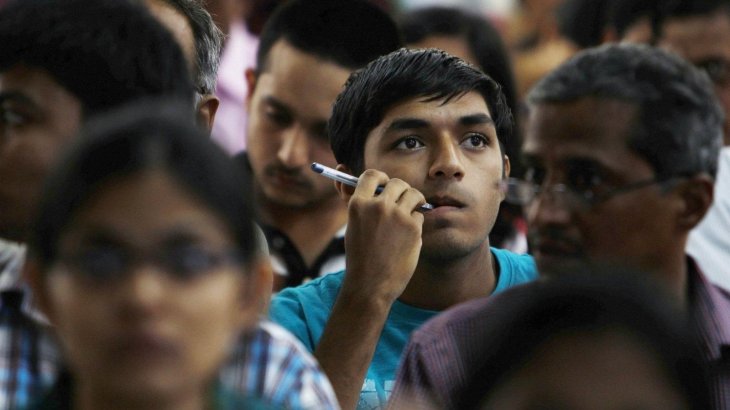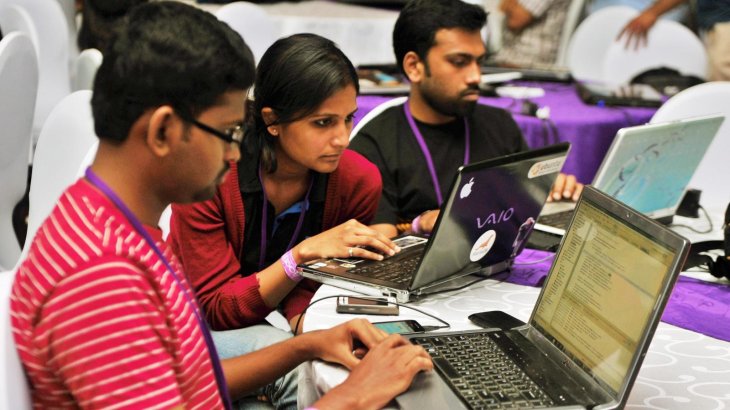80% Of Indian Engineering Students Are Unemployable, Study Shows
Aadhya Khatri - Mar 26, 2019

Indian higher education system in engineering does not have an effective curriculum to fill this skill gap
- Will AI Kill Coding Jobs? The Truth Might Surprise You
- Delhi Is The World’s Most Polluted Capital City For Three Years In A Row
- Indian Farmers Install High-Tech, Night-Vision CCTV Cameras To Protect Themselves
A new report by Aspiring Minds shows that 8 out of 10 engineering students in India do not have the needed skill sets to work in the knowledge economy and merely 2.5% of the workforce in this field can work with AI, the required skills for the current world.
The report also revealed that in 9 years, India saw no noticeable change in the employment rate of Indian engineering degree holders. Among the newly graduated, only a small number have advanced skills in technology.

The skill gap for Indian students is wide
Along with the startling figures for Indian tech workforce, the report also stated that the improvement in the tertiary education system did not have a positive effect on the gloomy prospect of employment in the country. Instead of just changing things on the surface, a more thorough transformation at the base of the whole system will be a better solution to the skill gap problem.
The report said that Indian government had to put more focus on university-level engineering education and come up with strategies that have a long-run effect, at least for the next 5 or 10 years, to deal with the unemployment rate of Indian tech graduates.
In terms of coding, the report shows that only a small proportion of engineers in the country have the required skills, the figure stands at 4.6%.
These engineers who are competent in coding can beat their Chinese counterparts, who account for only 2.1% of the tech workforce in this country, but cannot be compared to 18.8% of the American engineers when it comes to writing codes.
While China has far fewer engineers who have decent coding skills, if we put only those Indians (8.6%) and Chinese (9.8%) who can code correctly on a scale, the gap does seem to be significant at all.
India may boast a higher percentage of engineers who can code well than China, but when we compare the proportion of those who cannot do this, the figure for India is a lot larger than that of China, with 37.7% and 10.35% respectively. This reality suggests that India is lagging in coding, which calls for proper measures.

Indian engineers are lagging behind
The US still outperform India in coding. The evidence is only 4% of the American engineers cannot code correctly while the total number of Indian workforce in this field is four times greater than that of the US.
More importantly, the report suggests that Indian engineering students need to update and advance their skills to catch up with the more demanding jobs. The current tech world requires a workforce that has in-depth knowledge of artificial intelligence, data science, and machine learning to satisfy the needs of the field.
The dreaded situation of India’s current higher education in tech is also mentioned in the report. It said that courses are still theory-centric and this has led to only 40% of students being able to land an internship position and 36% of them reach beyond the standard curriculum to do more advanced projects.

Indian tech curriculum is still theory-centric
The study also highlights that the tech firms did not show up enough in the higher education system of the country. Indian students do not have the needed exposure to the real requirements of the field with only 47% of them are present at talks related to technology. The effort to bring more applicable knowledge into the engineering curriculum is not very fruitful as only 40% of the tech department have actions to associate existing concepts to practice.
What the report suggests is to combine counseling programs, methods to help students enhance their skills, and even technology itself. It said that Indian students need assistance to find jobs matching their ability and preference, the skill gaps that need to be filled, and which posts are in demand on the market.
Featured Stories

Features - Jul 01, 2025
What Are The Fastest Passenger Vehicles Ever Created?

Features - Jun 25, 2025
Japan Hydrogen Breakthrough: Scientists Crack the Clean Energy Code with...

ICT News - Jun 25, 2025
AI Intimidation Tactics: CEOs Turn Flawed Technology Into Employee Fear Machine

Review - Jun 25, 2025
Windows 11 Problems: Is Microsoft's "Best" OS Actually Getting Worse?

Features - Jun 22, 2025
Telegram Founder Pavel Durov Plans to Split $14 Billion Fortune Among 106 Children

ICT News - Jun 22, 2025
Neuralink Telepathy Chip Enables Quadriplegic Rob Greiner to Control Games with...

Features - Jun 21, 2025
This Over $100 Bottle Has Nothing But Fresh Air Inside

Features - Jun 18, 2025
Best Mobile VPN Apps for Gaming 2025: Complete Guide

Features - Jun 18, 2025
A Math Formula Tells Us How Long Everything Will Live

Features - Jun 16, 2025
Comments
Sort by Newest | Popular